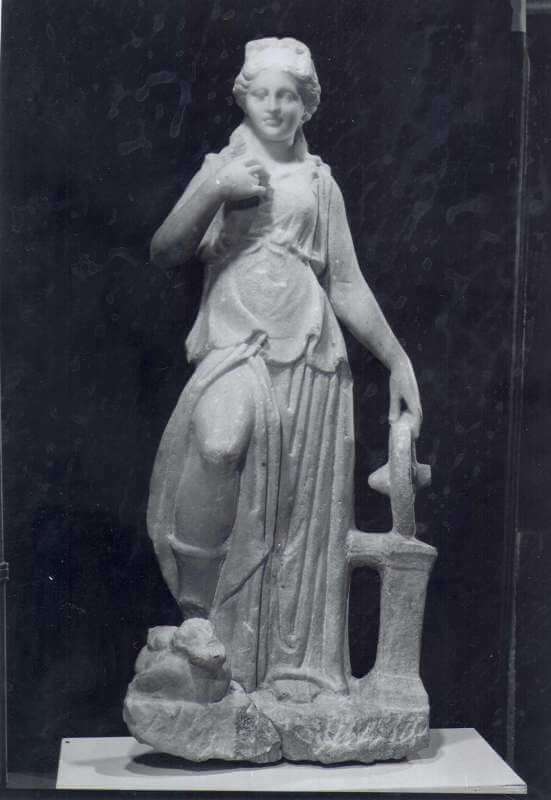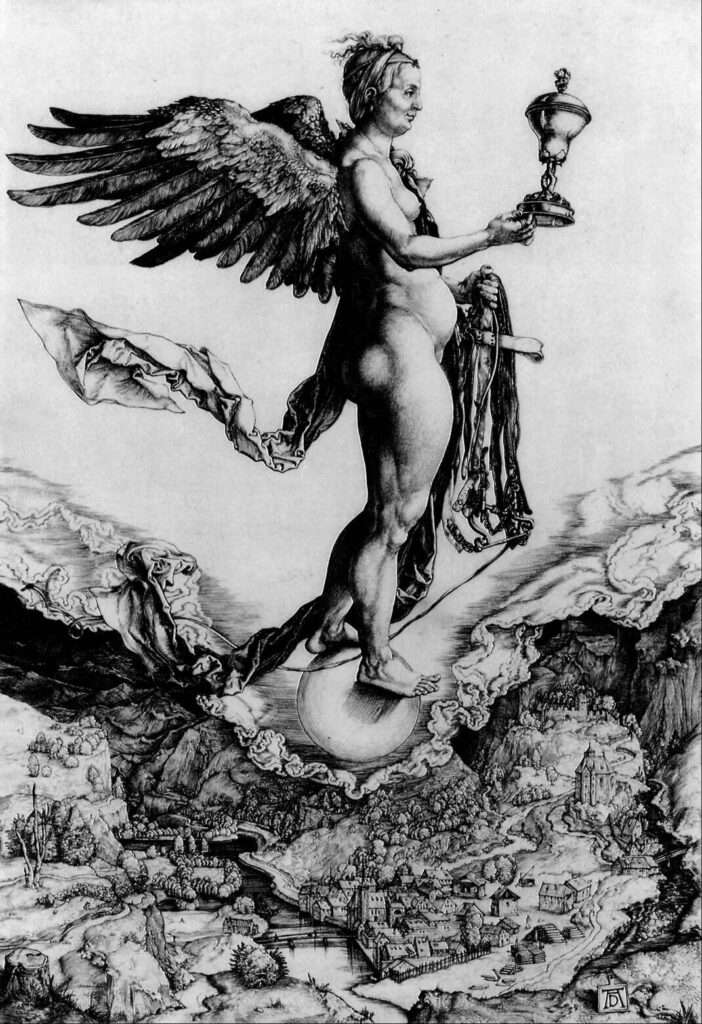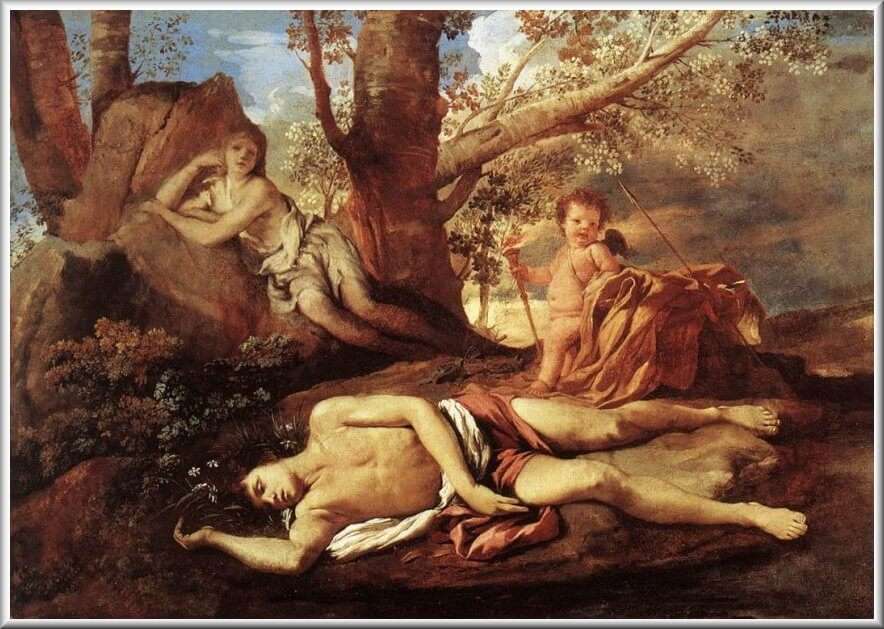I. Introduction:
Greek mythology, an integral part of ancient Hellenic culture, has sculpted the foundation of Western literature, art, and thought. These intricate tales, woven with gods, heroes, and mortals, reflect the values, fears, and aspirations of ancient Greece. Among this vast pantheon stands Nemesis, the formidable goddess of retribution. She is not just a deity but a manifestation of divine justice, ensuring that individuals reap what they sow. Embodying balance, Nemesis is pivotal in maintaining the equilibrium between fortune and misfortune, playing a crucial role in the moral fabric of these age-old stories. Her essence and narrative underscore the importance of cosmic justice and the inescapable consequences of one’s actions.
| Origin | Greek Mythology |
|---|---|
| Classification | Goddess |
| Family Members | Nyx (Mother) in some sources, Erebus (Father) in others, with many other deities, including Thanatos and Hypnos, as siblings depending on the myth |
| Region | Greece |
| Associated with | Retribution, Revenge, Balance, Divine Vengeance |
II. Historical Origins and Early References
A. Earliest Mentions in Ancient Texts
Greek mythology, replete with a myriad of gods and heroes, has been primarily immortalized through ancient literature. One such figure, Nemesis, has found her way into several pivotal texts:
- Hesiod’s “Theogony”: Here, Nemesis is introduced as a direct offspring of the Night, emphasizing her deep-rooted association with cosmic balance.
- Homer’s “Iliad” and “Odyssey”: While Homer occasionally alludes to Nemesis, it’s more in the context of retribution than as a personified deity.
- Hyginus’ “Fabulae”: This compilation of myths sheds light on Nemesis’ more personal stories and interactions with other gods and mortals.

B. Evolution of Nemesis Over Time
The perception of Nemesis underwent a transformation as Greek society evolved. Initially conceptualized as an abstract force, she represented the inescapable balance of life – the idea that excessive happiness or sorrow would inevitably be counterbalanced.
However, as myths expanded and narratives became more intricate, Nemesis took on a more personal form. This transformation was likely influenced by society’s need to visualize and personify abstract concepts, making them more relatable and comprehensible. As a personal goddess, she interacted with other deities, intervened in mortal affairs, and became a more dynamic character in myths, offering insights into the complexities of human emotions and morality.
In this evolution, one can discern a broader cultural shift. The Greeks moved from understanding the world through abstract concepts to humanizing those very notions, making their religious beliefs more intimate and intertwined with daily life.
III. Nemesis’ Role and Significance in Greek Mythology
A. Goddess of Retribution
In the ancient Greek ethos, retribution wasn’t just a concept of revenge or punishment; it held a deeper philosophical context. Retribution, in its essence, was about restoring cosmic balance, ensuring that neither excessive prosperity nor undue suffering went unchecked. It served as a reflection of the Greek belief in a harmonious universe where excesses were unnatural and needed rectification.
Nemesis, as the Goddess of Retribution, played a pivotal role in upholding this balance. She wasn’t just a vengeful deity; her actions were driven by the need to restore order. If an individual reveled in unearned fortune or committed grievous acts without facing consequences, Nemesis intervened, ensuring that the cosmic scales were balanced once more. Her role was not merely punitive but educational, teaching mortals the value of humility, the dangers of hubris, and the impermanence of fortune.

B. Balancing the Divine Order
In a pantheon teeming with gods representing love, war, wisdom, and myriad other aspects of life, Nemesis held a unique position. While other gods might be swayed by favoritism, emotions, or personal vendettas, Nemesis remained steadfast in her duty to balance fortune and misfortune.
Her very existence acted as a check and balance within the divine order. For instance, while Aphrodite might bestow unbridled love and Eros could strike with his unpredictable arrows of passion, Nemesis ensured that such blessings didn’t lead to unchecked arrogance or destructive behaviors.
Furthermore, her role was not just reactive but also preemptive. Nemesis would often intervene before an imbalance could escalate, making her a preventive force in the grand cosmic scheme. This proactive nature solidified her significance, ensuring that the world, both mortal and divine, remained in harmony, preventing cataclysmic imbalances that could disrupt the very fabric of existence.
IV. Iconography and Representations
A. Common Symbols and Their Meanings
Throughout art and literature, Nemesis is portrayed with a series of consistent symbols, each resonating with her divine purpose:
- The Wheel: One of the most significant symbols, the wheel represents the cycle of fortune and misfortune, underscoring Nemesis’s role in ensuring this cyclical balance. As the wheel turns, it emphasizes the transient nature of luck and destiny, with both highs and lows being inevitable.
- Whip: The whip symbolizes corrective action. It’s not just about punishment but about steering things back on course. It signifies Nemesis’s active role in rectifying imbalances in the world.
- Sword: A more direct symbol of justice and retribution, the sword emphasizes the decisiveness with which Nemesis acts. It’s a reminder that actions have consequences, and divine justice, when meted out, is swift and uncompromising.
Each of these symbols, when depicted in art or referenced in literature, serves as a potent reminder of the core tenets associated with Nemesis – balance, retribution, and the cyclical nature of life’s fortunes.

B. Artistic Representations Over Time
Nemesis’s portrayal in art has seen a fascinating evolution, reflecting the shifts in societal perceptions and artistic trends.
- Ancient Greek Vases: In the earliest depictions, she’s often seen wielding a whip or measuring rod, emphasizing her role as a corrector of imbalances. Her posture is usually authoritative, exuding an aura of divine purpose.
- Roman Mosaics and Frescoes: As Greek myths were integrated into Roman culture, Nemesis started being depicted in a more regal and elaborate manner, often with wings, symbolizing her omnipresence.
- Renaissance Art: With the revival of interest in Greek mythology during the Renaissance, Nemesis was portrayed in a more humanized form. Artists like Albrecht Dürer presented her in a more nuanced manner, reflecting on the duality of her nature – both compassionate and punitive.
- Modern Interpretations: In contemporary art and pop culture, Nemesis has taken on diverse forms, from graphic novels to modern sculptures. Her essence is often distilled to represent the broader concept of “karma”.
V. Famous Myths and Stories Involving Nemesis
A. Nemesis and Narcissus
One of the most iconic tales that showcase Nemesis’s influence involves Narcissus, a youth of exceptional beauty and overwhelming pride. Narcissus was so enamored by his reflection that he neglected the world around him, including the affections of many, leading to heartbreak and sorrow.
Witnessing his excessive hubris and the pain it was causing, Nemesis decided to intervene. To teach Narcissus a lesson in humility, she lured him to a clear, still pool. Upon seeing his reflection, Narcissus became so captivated that he couldn’t bring himself to leave, eventually leading to his tragic demise. He wasted away at the pool’s edge, transfixed by his own image, and in his place sprouted a beautiful flower, which now bears his name.
The tale serves as a poignant reminder of the dangers of vanity and the inescapable grasp of divine retribution.

B. Nemesis and Echo
While the story of Narcissus often overshadows the accompanying tale of Echo, it’s in this subplot that one can find layers of emotion and lessons about unrequited love. Echo, a beautiful nymph, was cursed by Hera to only repeat the last words spoken to her. Despite her condition, Echo fell deeply in love with Narcissus. However, due to his self-obsession and her curse, their interactions were doomed from the start.
Nemesis’s involvement in this tale is subtle but profound. It’s not just about punishing Narcissus for his vanity but also about highlighting the tragic consequences of such hubris on innocent bystanders like Echo.
VI. Nemesis in Popular Culture
A. Movies, Books, and Other Media Interpretations
The enigmatic persona of Nemesis has transcended ancient scriptures and found her way into the modern-day zeitgeist, being adapted and reinterpreted across various media platforms:
- Movies: Films like “Clash of the Titans” and “Percy Jackson & the Olympians” have brought Greek myths to the forefront, with Nemesis making appearances, albeit in supporting roles, emphasizing her importance in the pantheon’s dynamics.
- Books: Rick Riordan’s Percy Jackson series, among others, introduces young readers to Nemesis, portraying her as a complex deity torn between her duty and her emotions.
- Video Games: Titles like “God of War” and “Assassin’s Creed Odyssey” incorporate elements of Greek mythology, with Nemesis featuring as a formidable adversary or a guiding force.
- Music and Theater: Operas, plays, and musical compositions inspired by Greek myths occasionally touch upon Nemesis’s influence, exploring her multifaceted nature through lyrical narratives and dramatic performances.
These contemporary interpretations, while diverse, retain the core essence of Nemesis, underscoring her enduring relevance and the timeless appeal of her narrative.

B. Philosophical Analysis of Nemesis
Nemesis, at her core, embodies the principle of retribution – the idea that actions, both good and bad, will invariably meet with consequences. But how does this ancient concept align with today’s world?
The allure of Nemesis’s story isn’t just about divine retribution but about introspection. It serves as a mirror, prompting individuals and societies to evaluate their actions, acknowledge their hubris, and strive for a balanced existence. In a world teetering on extremes, the age-old tales of Nemesis offer a poignant reminder of the middle path, emphasizing harmony, humility, and the inescapable interplay of cause and effect.
By juxtaposing Nemesis’s principles with modern dilemmas, one discerns an urgent call for reflection, making her not just a relic of the past but a beacon for the present and the future.
VII. Conclusions
Nemesis, the formidable Greek goddess of retribution, holds a distinct place in the pantheon, representing the intricate dance of balance, justice, and consequence. Her tales, spanning from the tragic story of Narcissus to her subtle interventions in the lives of mortals, weave a narrative rich in lessons about humility, the transient nature of fortune, and the inevitability of cosmic equilibrium. While rooted in ancient lore, Nemesis’s principles resonate profoundly with contemporary challenges, serving as a timeless testament to the universality of her message. Her enduring legacy, whether glimpsed in modern media adaptations or invoked in philosophical discourses, underscores the persistent human yearning for justice and balance. In an ever-evolving world, Nemesis stands as a poignant reminder of the foundational values that guide civilizations, ensuring that her influence remains both relevant and revered across epochs.
